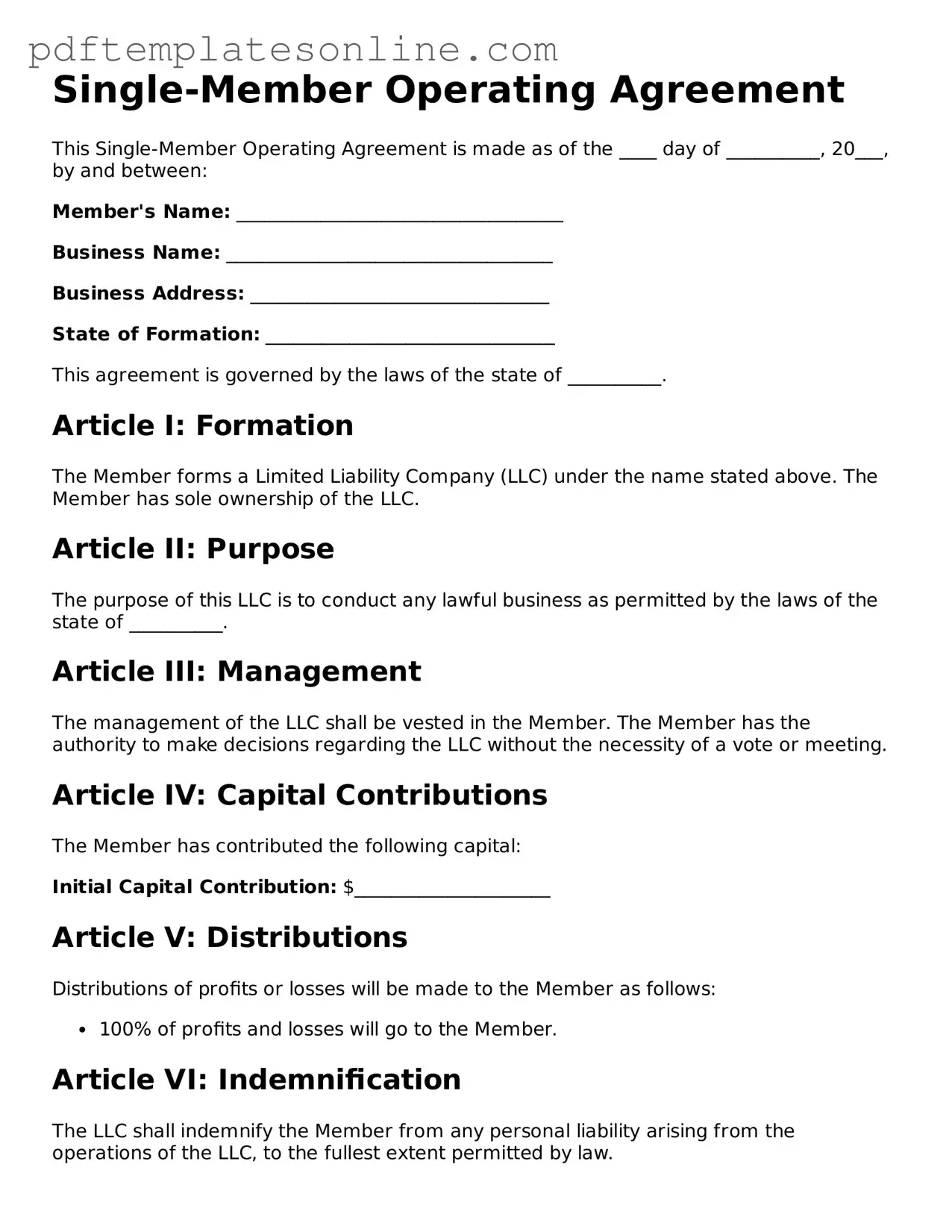Fillable Single-Member Operating Agreement Document
A Single-Member Operating Agreement is a legal document that outlines the management structure and operational guidelines for a single-member limited liability company (LLC). This agreement serves as a crucial tool for the owner, defining their rights and responsibilities while protecting personal assets. By establishing clear rules, it helps ensure the smooth functioning of the business and compliance with state laws.
Access Single-Member Operating Agreement Editor Now
